TENERIFE
History
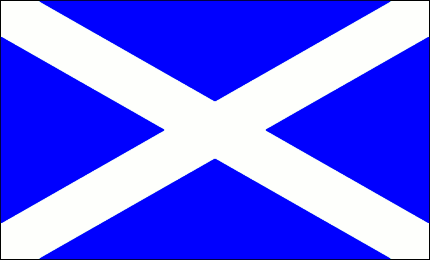
History

Cities in TENERIFE
| Costa adeje | Los cristianos | Playa de las americas |
Popular destinations SPAIN
| Andalusia | Catalonia | Costa blanca |
| Costa brava | Costa del sol | El hierro |
| Formentera | Fuerteventura | Gran canaria |
| Ibiza | La gomera | La palma |
| Lanzarote | Mallorca | Menorca |
| Tenerife |
History
Original inhabitants: Guanches
The original inhabitants of Tenerife were the Guanches. It is still unclear exactly where these people came from, but it is believed that they descended from Berber tribes from North Africa. About 4,000 years ago they are said to have crossed from the African mainland to Tenerife and the other Canary Islands. The first people to cross over were from the Cro-Magnon race, followed later by a Mediterranean race, the Majos. The Cro-magnons were large, light-skinned, and had blue eyes; the majos were smaller and had a darker complexion. The Cro-Magnon lived mainly on Tenerife and Gran Canaria, the Majos mainly on Furteventura and Lanzarote.
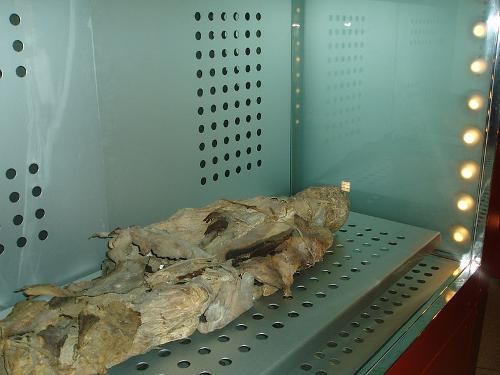 Guanche Mummy, TenerifePhoto: Cardenasg CC 3.0 Unported no changes made
Guanche Mummy, TenerifePhoto: Cardenasg CC 3.0 Unported no changes made
Initially, the Guanches were collectors and fishermen, but about 2000 years ago they focused on cultivating land, keeping livestock and also lived in groups. The tools they had were made only of wood and stone, they did not know copper or iron. Because they had lost their knowledge of shipping in the course of time, the Guanches of the different islands had little contact with each other. Archaeological research has shown that different groups arose on the islands themselves, each with their own lifestyle and customs.
Tenerife was divided among the Guanches into nine so-called "menceynatos": Abona, Adeje, Anaga, Daute, Güimar, Icod, Tacoronte, Taoro and Tegueste. These menceynatos were led by the king, the "mencey", who was assisted by a council of older men, the "tagoror". Tenerife society consisted of three groups: the "achimency" descended from the mencey; the cichiciquitzo was the lesser nobility and the achicaxna were the peasants.
Europeans conquer the archipelago ... except Tenerife
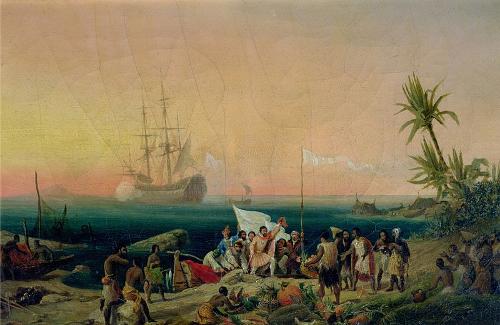 Jean de Béthencourt steps ashore on LanzarotePhoto: Public domain
Jean de Béthencourt steps ashore on LanzarotePhoto: Public domain
The first Europeans appeared on the scene in the early 14th century. They came from Castile, Catalonia, Genoa, Mallorca and Portugal. In 1312 the Genoese Lancelotte Mallocello set foot on the island that would later be called Lanzarote. After that, things remained quiet around the islands for nearly a century. In 1402, the Norman Jean de Béthencourt was ordered by King Henry III of Castile to conquer the Canary Islands for the Castilian crown.
Initially, only Fuerteventura was occupied by the fierce resistance of the Guanches. In 1404 the inhabitants of Fuerteventura, El Hierro and La Gomera were defeated. The attempt to conquer Gran Canaria and La Palma failed completely and he returned to France. It was not until 1483 that Gran Canaria was conquered after a five-year battle. The army was under the joint rule of Ferdinand of Aragon and Isabella of Castile. After this, La Palma was quickly conquered by Alonso Fernández de Lugo. King Tanausú was captured by ruse and died on his way to the Spanish mainland.
Canary Islands definitive Spanish possession
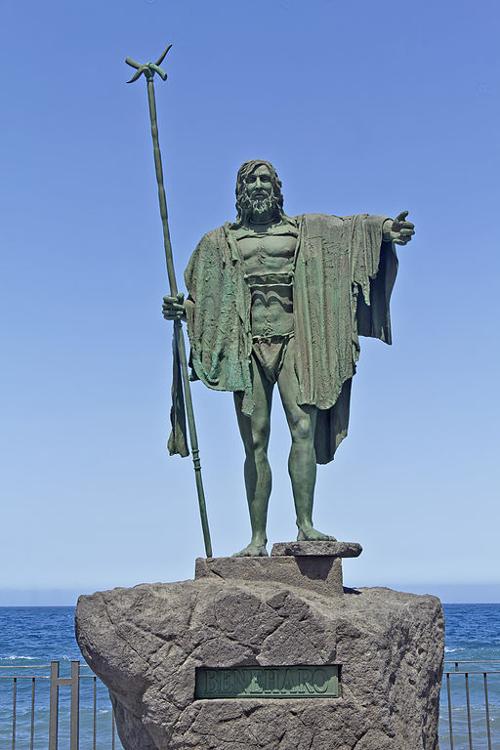 Statue of Guanche King Beneharo, TenerifePhoto: Koppchen CC 3.0 Unported no changes made
Statue of Guanche King Beneharo, TenerifePhoto: Koppchen CC 3.0 Unported no changes made
The only free island then was Tenerife. The first attempt to conquer Tenerife failed in 1494. Many Castilians were killed in the fierce battle led by, among others, Guanche king Beneharo, together with a number of other kings of the other Canary Islands. In 1495 Alonso Fernández de Lugo tried again and in 1496 the last resistance of the Guanches was broken at La Victoria.
After that a bad time came for the islanders. The diseases brought by the Spanish made them die like rats. The Guanches that remained were employed in the sugar refineries or sold as slaves in the slave markets of Seville and Valencia. The land of the Guanches was divided among a few large landowners and only Guanches who had fought with the Spaniards still had some privileges, but eventually mixed with the Spanish conquerors.
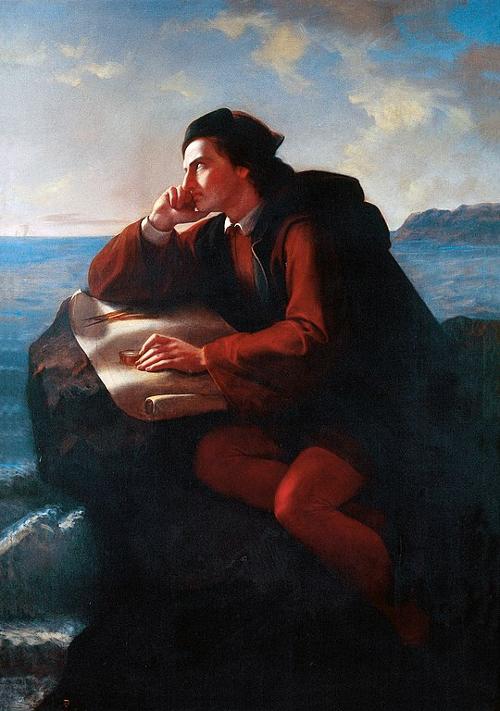 Columbus, TenerifePhoto: Public domain
Columbus, TenerifePhoto: Public domain
The Canary Islands played an important role in Christopher Columbus's voyages of discovery to America. Here the sailors regained their strength and fresh food and water could be loaded. Columbus stayed in Gran Canaria three times and once in la Gomera. As a result, the islands developed into an important trading center and, moreover, many islanders emigrated to North America and South America. The emergence of the two major ports of Santa Cruz de Tenerife and Las Palmas de Gran Canaria also made the islands increasingly important as a trade center.
Negatively, the Canary Islands were also used as a stopover on the slave route to America. Both shipping and the islands themselves suffered greatly from piracy in the 16th and 17th centuries. Silver fleets from America were looted and settlements on the islands were regularly looted. In 1704, 1705 and 1706 Tenerife was ravaged by heavy volcanic eruptions. In 1715, a crisis in winegrowing ensued that forced many residents of Tenerife to emigrate to Latin America. In 1744, the first university in the Canary Islands was opened in La Laguna.
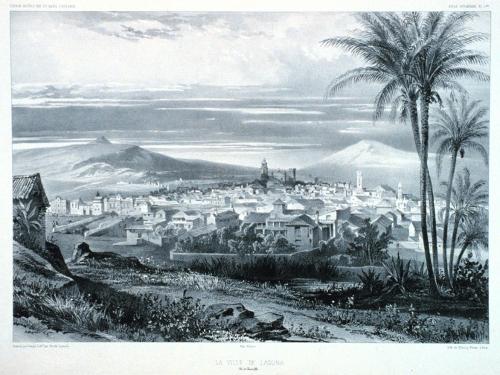 Tenerife La Laguna around 1840Photo: Public domain
Tenerife La Laguna around 1840Photo: Public domain
At the beginning of the 18th century, the Spanish world empire continued to crumble and was taken over by the British Empire. Still, the Spaniards managed to keep the Canary Islands despite Admiral Edward Blake's attacks on Tenerife and even the famed Horatio Nelson attack was repulsed. In 1822, Santa Cruz de Tenerife became the new capital of the Canary Islands after La Laguna.
Economic growth and division into two provinces
In the meantime, the strategic location of the islands became increasingly favorable. In the 19th century, large-scale investments were made in the economy of the islands and the establishment of free ports in 1872 was also of great importance. A disadvantage was that the islands were completely dependent on the international economic and political situation. During the First and Second World War, it was therefore no wonder that English and German submarines lurked in front of the Canary ports.
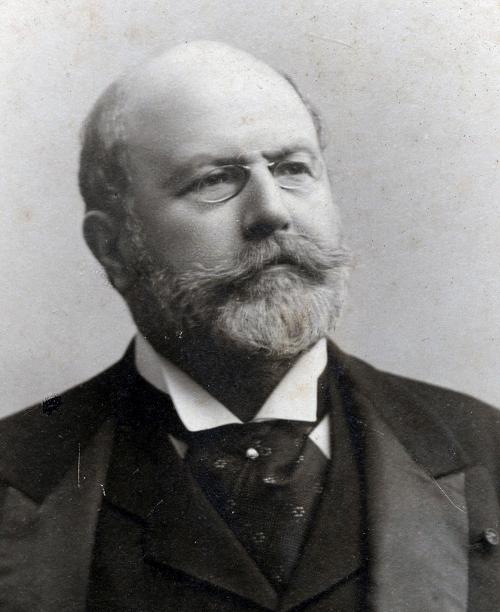 Fernando León y Castillo, TenerifePhoto: Public domain
Fernando León y Castillo, TenerifePhoto: Public domain
Between 1880 and 1918, the archipelago was politically dominated by the Canary Liberal Party led by Fernando León y Castillo. After his death, the ever-present conflict between Tenerife and Gran Canaria flared up for supremacy in the archipelago. It was not resolved and eventually it was decided to divide the archipelago into two provinces: the western province of Santa Cruz de Tenerife with El Hierro, La Gomera and La Palma, and the eastern province of Las Palmas de Gran Canaria with Fuerteventura and Lanzarote. It is clear that there is still a healthy competition between the two provinces.
Spanish Civil War
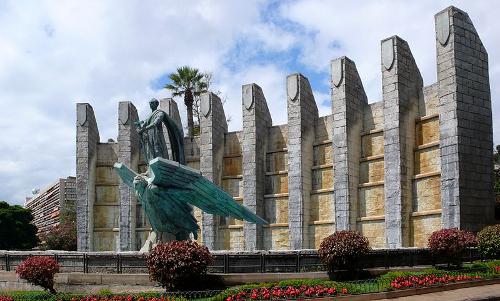 Monument to Franco, Santa Cruz TenerifePhoto: Mataparda CC 2.0 Generic no changes made
Monument to Franco, Santa Cruz TenerifePhoto: Mataparda CC 2.0 Generic no changes made
In 1936, after elections in Spain, a popular front government came to power, consisting of liberal republicans, socialists, syndicalists and communists. The dictatorialist General Francisco Franco was appointed Governor of the Canary Islands with the intention of taking the wind out of his sails.
In the same year, however, Franco assembled a group of officers in Tenerife and plans were hatched to overthrow the democratically elected popular front government. In July he crossed to mainland Spain and joined other rebel soldiers. The bloody Spanish civil war broke out in 1939 and Franco emerged as a great triumphator.
Canary Islands will have more autonomy
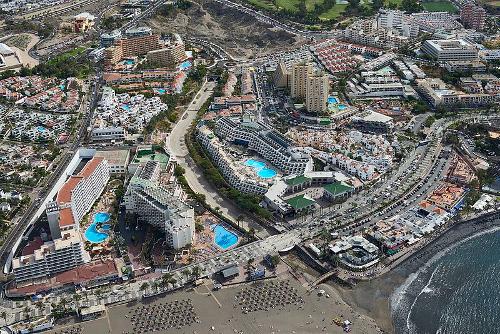 Aerial view Playa de las Americas, TenerifePhoto: Wouter Hagens CC 4.0 International no changes made
Aerial view Playa de las Americas, TenerifePhoto: Wouter Hagens CC 4.0 International no changes made
After Franco's death, Spain was transformed into a parliamentary democracy under the inspiring efforts of King Juan Carlos de Bourbon y Bourbon. The big consequence for the Canary Islands was that the provinces in Spain got more and more autonomy. 1982 was a crucial year for the Canary Islands: the Canary Islands became an autonomous region. The rivalry between Tenerife and Gran Canaria naturally re-emerged immediately. A compromise was reached and both islands were assigned half of the government departments. Tenerife got the parliament and Gran Canaria the supreme court, while the division into two provinces continued as usual. From the 1960s onwards, the islands disappeared permanently from the world news, but developed at lightning speed into a modern society that was experiencing an enormous economic boom as a result of the greatly increased tourism.
In 1999, the Coalición Canaria, an alliance of various political parties, gained the absolute majority in the island council, the Cabildo Insular.
See also the history of Spain on TheWorldOfInfo.
Sources
Gruschwitz, B.F. / Canarische Eilanden
Het Spectrum
Klöcker, H. / Tenerife
Zuidnederlandse Uitgeverij
Krause, D. / Tenerife
ANWB,
Nowaczyk, D. / Tenerife
Van Reemst
Rokebrand, R. / Reishandboek Tenerife
Elmar
CIA - World Factbook
BBC - Country Profiles
Copyright: Team The World of Info